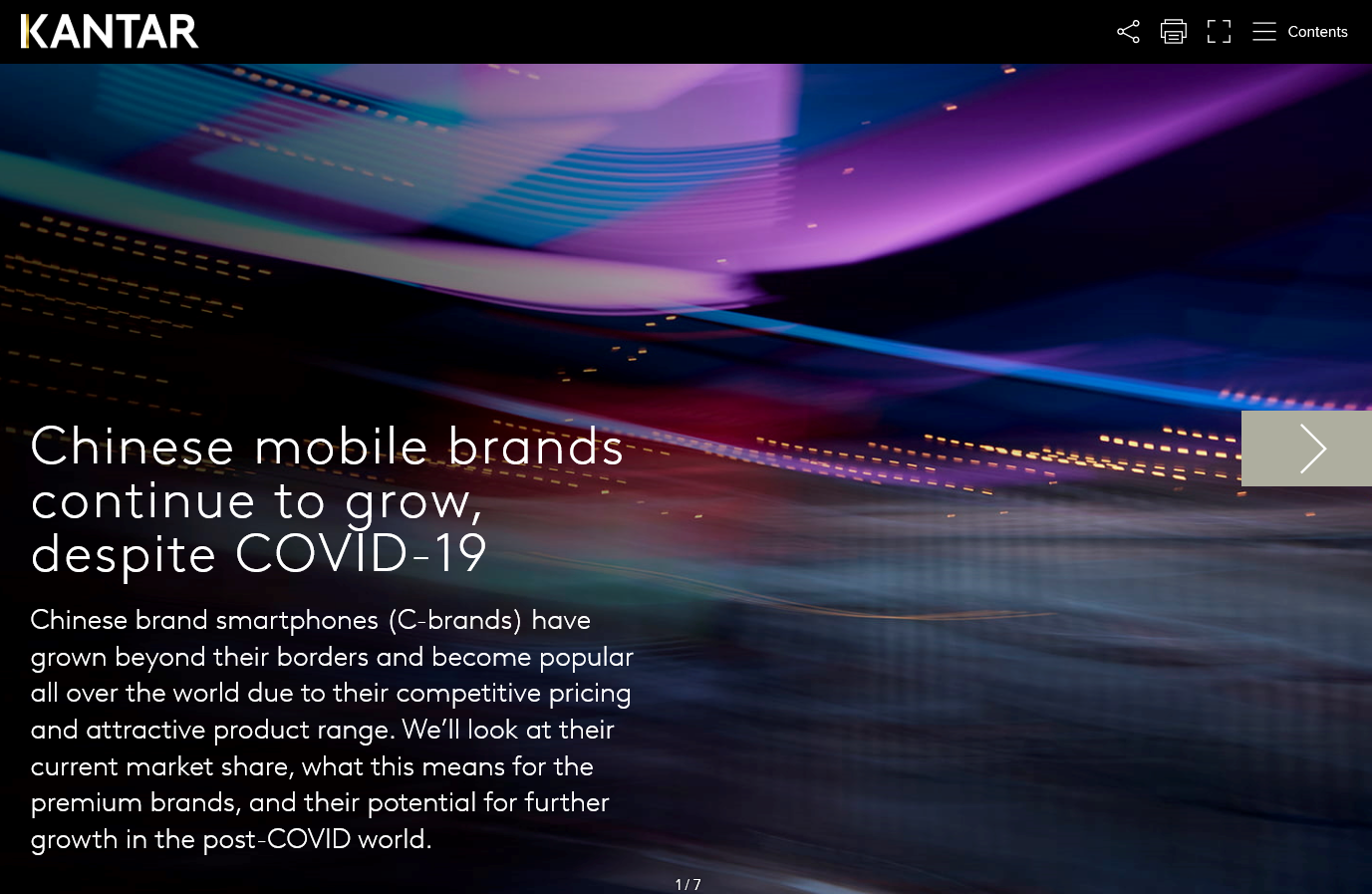Chinese brands Xiaomi and Huawei have grown far beyond their Chinese origins in recent years due to a winning combination of good products at a very competitive price point.
Over the last few years these brands have become as familiar to consumers in many markets as the likes of Apple and Samsung. They have reshaped the traditional mobile phone price tiers progressing from unknown to mainstream. The question now though is how much more they can grow and whether the recent COVID-19 pandemic will have an impact.
However, the rise of Chinese smartphone brands has been met by challenges; the China/US trade war, Google’s announcement to pull Huawei’s Android license and more recently the United Kingdom government’s banning of Huawei from its 5G network. At least for Huawei, this will limit their future growth potential across many markets.
The following paper draws on data from Kantar’s Worldpanel ComTech panel and considers:
- Current market share of the Chinese brands globally, contrasting the EU5 (UK, France, Germany, Spain and Italy) with the US and Australia.
- Insights into consumer sentiment in the wake of the pandemic and how this might affect their future buying behaviour.
- The impact of Chinese brands on the market leaders and the future role of the premium sector.
Chinese smartphone brands now represent 26% of the market in the EU5 (UK, France, Germany, Spain and Italy), 12.5% in Australia and 4.3% in the United States (a smaller share in-part due to the on-going China/US trade war).
Although the positioning of Chinese brands is ideal for consumers wanting to upgrade from legacy brands such as Sony and Nokia, smartphone leaders Apple and particularly Samsung have also not escaped the pressure of their growing popularity. In 2019 Samsung refreshed their Galaxy A series, with boosted specs and a sleeker design, the launch helped to stall the surge in Chinese brand sales. Since the A series release in Q2 2019, Samsung has boosted their share in the low, mid and high spend tiers. In April 2020, iPhone SE 2 launched with the strapline “Lots to love. Less to spend” and the timing couldn’t have been more acute. iPhone SE 2 offers the latest A13 chip, the same chip used in the flagship models iPhone 11 Pro.
Many consumers who plan to buy a smartphone within the next six months have decided to delay spending; 31% in China, 47% in Australia, 25% in EU5 and 27% in the US, where the proportions skew higher among those financially impacted by COVID-19.
Xiaomi’s European launch initially focused on Spain, gaining share rapidly through superior marketing execution at the point of purchase. Over the last two years we have seen notable investment from Xiaomi into brick and mortar stores, which has coincided with increased sales through this channel (27% in Q4 2019 up from 22% in Q4 2018).
The world of mobile brands is highly dynamic and able to react quickly and effectively to changes in consumer demand as we have seen with some of the new products that have come to market in recent times. This new paper provides an overview of the current key trends and likely developments in our post-pandemic world.
To find out more, please download the paper today and feel free to reach out to our experts.


